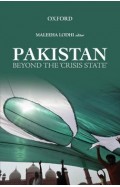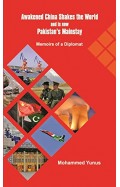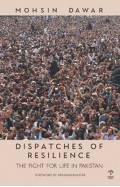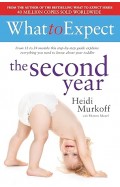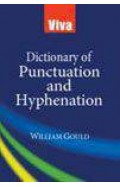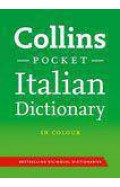- Home
- Books
- Categories
- Non Fiction
- Introducing International Relations Concepts, Theories, and Practices
Introducing International Relations Concepts, Theories, and Practices
By: Farhan Hanif Siddiqi
-
Rs 1,255.50
- Rs 1,395.00
- 10%
You save Rs 139.50.
Due to constant currency fluctuation, prices are subject to change with or without notice.
Introducing International Relations explores the development of the IR ‘discipline’ through three major essentials: concepts, theories, and practices. Each chapter is structurally organised with respect to detailing concepts, moving thereon to theory, and animated with relevant empirical examples making the connect between theory and practice. Pakistan and the developing world provide the primary reference points for the discussion of practice which is one of the major strengths of the book. In addition, the book challenges students to think methodically, independently, and critically by way of relevant thinking exercises and a summation of key points at the end of individual chapters.
This book will not only serve as a useful text for undergraduate and graduate students in universities and colleges but also as a resource for faculty, researchers in think tanks, bureaucrats, candidates appearing in competitive civil service examinations, journalists in print and electronic media, and general readers interested in understanding the nuances that constitute, determine, and shape international relations.
Introducing International Relations explores the development of the IR ‘discipline’ through three major essentials: concepts, theories, and practices. Each chapter is structurally organised with respect to detailing concepts, moving thereon to theory, and animated with relevant empirical examples making the connect between theory and practice. Pakistan and the developing world provide the primary reference points for the discussion of practice which is one of the major strengths of the book. In addition, the book challenges students to think methodically, independently, and critically by way of relevant thinking exercises and a summation of key points at the end of individual chapters.
This book will not only serve as a useful text for undergraduate and graduate students in universities and colleges but also as a resource for faculty, researchers in think tanks, bureaucrats, candidates appearing in competitive civil service examinations, journalists in print and electronic media, and general readers interested in understanding the nuances that constitute, determine, and shape international relations.
Introducing International Relations Concepts, Theories, and Practices
By: Farhan Hanif Siddiqi
Rs 1,255.50 Rs 1,395.00 Ex Tax :Rs 1,255.50
Zubin Mehta: A Musical Journey (An Authorized Biography)
By: VOID - Bakhtiar K. Dadabhoy
Rs 472.50 Rs 1,050.00 Ex Tax :Rs 472.50
Honour Unmasked Gender Violence, Law, and Power in Pakistan
By: Nafisa Shah
Rs 746.25 Rs 995.00 Ex Tax :Rs 746.25
Awakened: China Shakes the World and is now Pakistan's Mainstay - Memoirs of a Diplomate Hardcover
By: Mohammed Yunus
Rs 360.00 Rs 800.00 Ex Tax :Rs 360.00
Dispatches Of Resilience: The Fight For Life In Pakistan
By: Mohsin Dawar
Rs 765.00 Rs 850.00 Ex Tax :Rs 765.00
Viva Dictionary Of Punctuation And Hyphenation
By: William Gould
Rs 135.00 Rs 150.00 Ex Tax :Rs 135.00
And Another Thing... (The Hitchhiker's Guide to the Galaxy)
By: Eoin Colfer
Rs 355.50 Rs 395.00 Ex Tax :Rs 355.50
Collins Pocket Italian Dictionary
By: Collins Dictionaries
Rs 1,491.75 Rs 2,295.00 Ex Tax :Rs 1,491.75
Honour Unmasked Gender Violence, Law, and Power in Pakistan
By: Nafisa Shah
Rs 746.25 Rs 995.00 Ex Tax :Rs 746.25
Awakened: China Shakes the World and is now Pakistan's Mainstay - Memoirs of a Diplomate Hardcover
By: Mohammed Yunus
Rs 360.00 Rs 800.00 Ex Tax :Rs 360.00
Dispatches Of Resilience: The Fight For Life In Pakistan
By: Mohsin Dawar
Rs 765.00 Rs 850.00 Ex Tax :Rs 765.00
No recently viewed books available at the moment.
Zubin Mehta: A Musical Journey (An Authorized Biography)
By: VOID - Bakhtiar K. Dadabhoy
Rs 472.50 Rs 1,050.00 Ex Tax :Rs 472.50
Introducing International Relations Concepts, Theories, and Practices
By: Farhan Hanif Siddiqi
Rs 1,255.50 Rs 1,395.00 Ex Tax :Rs 1,255.50
Honour Unmasked Gender Violence, Law, and Power in Pakistan
By: Nafisa Shah
Rs 746.25 Rs 995.00 Ex Tax :Rs 746.25
Awakened: China Shakes the World and is now Pakistan's Mainstay - Memoirs of a Diplomate Hardcover
By: Mohammed Yunus
Rs 360.00 Rs 800.00 Ex Tax :Rs 360.00
Dispatches Of Resilience: The Fight For Life In Pakistan
By: Mohsin Dawar
Rs 765.00 Rs 850.00 Ex Tax :Rs 765.00












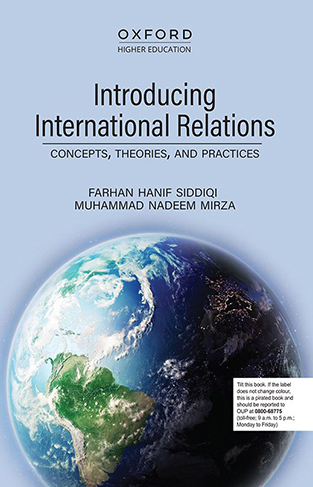
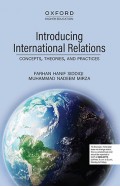
-120x187.jpg?q6)





